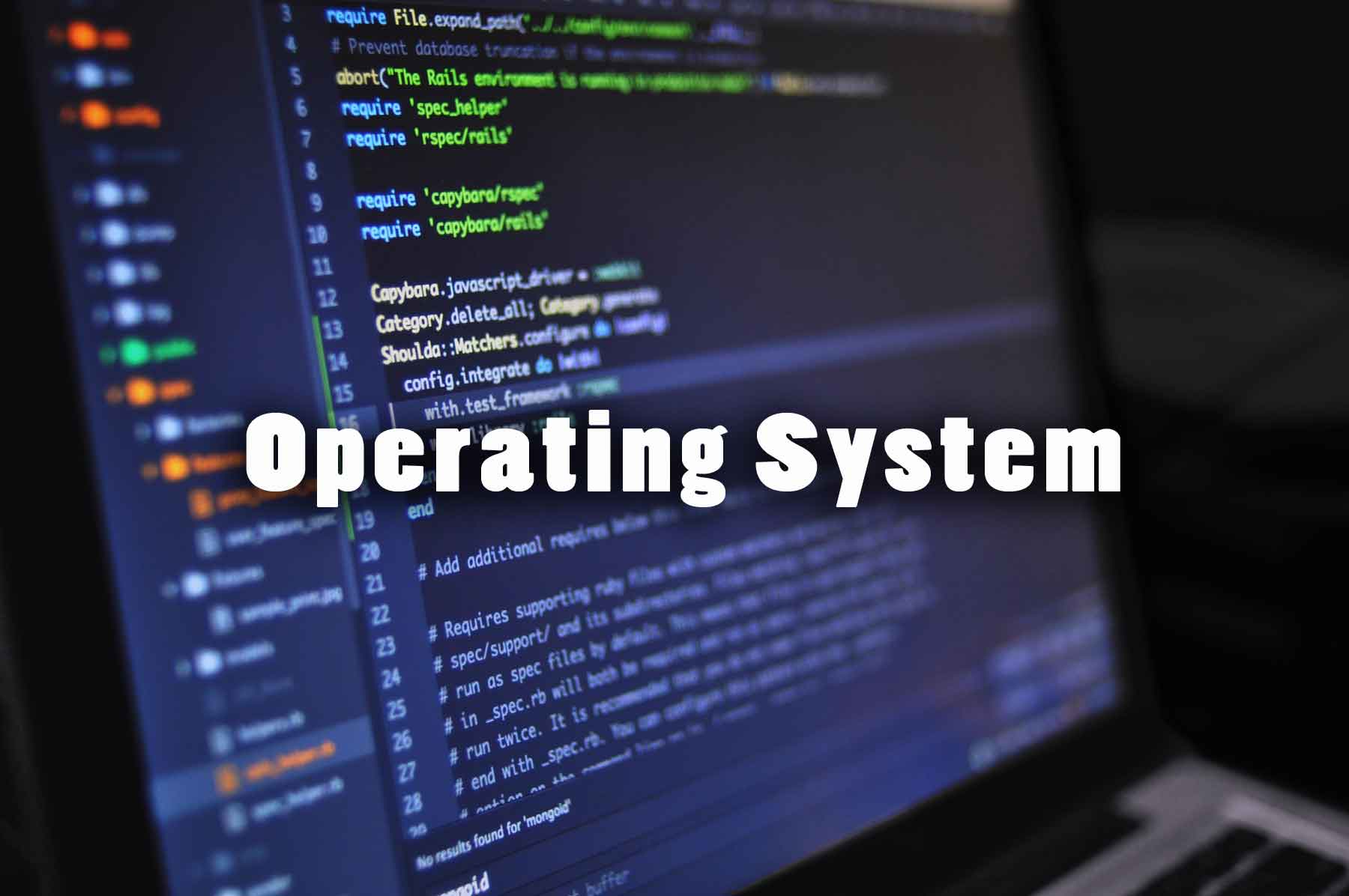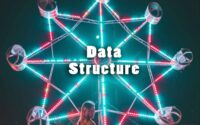Operating System Important Questions and Answers
The Free download links of Operating System Important Questions and Answers Papers enclosed below. Candidates who are going to start their preparation for the Operating System Important papers can use these links. Download the Operating System Important Papers PDF along with the Answers. Operating System Important Papers are updated here. A vast number of applicants are browsing on the Internet for the Operating System Important Question Papers & Syllabus. For those candidates, here we are providing the links for Operating System Important Papers. Improve your knowledge by referring the Operating System Important Question papers.

Important Questions and Answers on Computer Networking
1. In which of the following our necessary conditions for deadlock processes claim exclusive control of the resources they require ?
(a) no pre-emption
(b) mutual exclusion
(c) hold and wait
(d) circular wait
2. The no preeption condition for deadlock is exists when
(a) each resource is either currently assigned to exactly one process or is available
(b) process currently holding resouces granted earlier can request new resources
(c) esources previously granted cannot be forcibly taken away from a process
(d) these must be a circular chain of two o more processes, each of which is wating for a resource held by the next member of chain.
3. Dijkstra’s hanker’s algorithm in an operating system solves the problem of
(a) deadlock avoidance
(b) mutual exclusion
(c) deadlock recovery
(d) context switching
4. Which of the following resources can cause deadlocks?
(a) Read only files
(b) Shared programs
(c) Printers
(d) all of the above
5. A set of resource allocations such that the sstem can allocate resources to each process in some order, and still avoids a deadlock is called
(a) unsafe state
(b) Starvation
(c) safe state
(d) greedy allocation
6. A process is said to be in —— state if it is wating for an event that will never occur.
(a) Safe
(b) Starvation
(c) Unsafe
(d) deadlock
7. The dispatcher
(a) actually schedules the tasks into the processor
(b) is always very small and simple
(c) puts tasks in I/O wait
(d) never changes task priorities
8. The most complex dispatcher
(a) should always be used
(b) should never be used
(c) is never used on large computers
(d) should be used only on large computers
9. Round-Robin scheduling
(a) is quite complex to implement
(b) allows interactive tasks quicker access to the processor
(c) allows processor-bound tasks more time in the processor
(d) give each task the same change at the processor
10. Processor-bound tasks
(a) use the processor more often
(b) use more processor time
(c) use less processor time
(d) always take longer to execute
11. Feedback queues
(a) are very simple to implement
(b) dispatch tasks according to execution characteristics
(c) are used to favor real-time tasks
(d) require manual intervention to implement properly
12. Complex scheduling algorithms
(a) use more resources than they gain
(b) recover more resources than they use
(c) always use many resources
(d) are most appropriate for very large computers
13. I/O intensive jobs
(a) us less processor time than most jobs
(b) are constrained by their I/O requirements
(c) run more quickly than processor-intensive jobs
(d) should all be executed at the same time
14. The FIFO algorithm
(a) executes first the job that last entered the queue
(b) executes first the job that first entered the queue
(c) executes first the job with the least processor needs.
(d) executes first the job that has been in the queue the longest
15. The SJF algorithm
(a) executes first the job that last enetered the queue
(b) executes first the job that first entered the queue
(c) executes first the job with the least processor needs.
(d) executes first the job that has been in the queue the longest
16. Checkpointing a job
(a) allows it to be completed successfully
(b) allows it to continue executing later
(c) prepares it for finishing
(d) occurs only when there is an error in it
18. At a single terminal CPU, 40% of all users have no wait to use the terminal and the average wait time for all users is 50 minutes. What is the average wait time for those who wait? (Round off the closest answer).
(a) 60
(b) 80
(c) 70
(d) 100
19. With Round-Robin CPU scheduling in a time shared system :
(a) using very large time slices (quantas) degeneratedes into First-Come First served (FCFSW) algorithm.
(b) using extremely small time slices improves performance
(c) using very small time slices degenerates into Last-In First-Out (LIFO) algorithm
(d) using medium sized time slices leads to shortest Request time First (SRTF) algorithm
20. The portion of the process scheduler in an operating system that dispatches processes is concerned with
(a) activating seemed I/O-bond processes
(b) temporarily suspending processes when CPU load is too great
(c) assigning ready processes to the CPU
(d) all of the above
| Practice Questions | Objective Papers |
| Quiz | Important Questions |
| Mock Test | Previous Papers |
| Typical Question | Sample Papers |
| MCQs | Model Papers |
21. Which is the correct definition of a valid process transition within an operating system?
(a) wakeup: ready → running
(b) block ready → blocked
(c) dispatch: ready → running
(d) timer run out: ready → blocked
22. Only state transition initiated by the user process itself in an operating system is
(a) Block
(b) timer runout
(c) dispatch
(d) wake up
23. A task is
(a) the smallest discrete step in a job
(b) part of I/O
(c) a piece of work
(d) a collection of jobs
24. A process is another name for
(a) a job
(b) a aging
(c) a task
(d) the operating system dispatcher
25. Fork is
(a) the creation of a new job
(b) increasing the priority of a task
(c) the dispatching of a task
(d) the creation of a new process
26. A task in a blocked state
(a) is executable
(b) must still be placed in the run queues
(c) is waiting for some temporarily unavailable resource
(d) is running
27. Semaphores
(a) are used to do I/O
(b) synchronize critical resources to prevent contention
(c) synchronize critical resources to prevent deadlock
(d) allow processes to communicate with one another
28. Priorities
(a) are used to schedule processes
(b) increase as a process remains in the processor
(c) are attached to each page in the system
(d) are assigned by the user
29. Resource locking
(a) allows multiple tasks to simultaneously use resources
(b) forces only one task to use any resource at any time
(c) can easily cause a deadlock condition
(d) is not used for disk drives
30. Inerprocess communication
(a) is never necessary
(b) allows processes to synchronize activity
(c) is required for all processes
(d) is usually done via disk drives
31. Spinning
(a) requires several processes
(b) uses very little processor time
(c) requires the processor to keep trying until successful
(d) should be used for all resources
32. Global locks
(a) are used to avoid local locks
(b) synchronize access to global resources
(c) synchronize access to local resources
(d) prevent access to global resources
33. The most common system security method is
(a) Passwords
(b) Mantrap
(c) Key-card systems
(d) None of these
34. Dial-back systems
(a) prevent hackers from calling the computer
(b) force the user to call the computer twice to get access
(c) require no effort by systems personnel to implement
(d) receive calls, and calls back if user is authorized
35. Supervisor state is
(a) entered by programs when they enter the processor
(b) required to perform any I/O
(c) only allowed to the operating system
(d) never used
36. Trojan-Horse programs
(a) are legitimate programs that allow unauthorized access
(b) are hack-programs that do not shown up on the system
(c) really do not usually work
(d) usually are immediately discovered
37. files can have
(a) Read access
(b) Write access
(c) Copy access
(d) All of the above
38. A public heyencryption system
(a) allows anyone to decode the transmissions
(b) allows only the correct sender to decode the data
(c) allows only the correct receiver to decode the data
(d) does not encode the data before transmitting it.
39. Link encryption
(a) is more secure than end-to-end encryption
(b) is less secure than end-to-end encryption
(c) cannot be used in a large network
(d) is used only to detect errors
40. Data encryption
(a) is most used by financial network
(b) is most used by public billboard network
(c) cannot be used by private installations
(d) is not necessary, since data cannot be intercepted
41. The most common security failure is
(a) insufficient technology used to prevent breaches
(b) too much emphasis on preventing physical access
(c) depending on passwords
(d) carelessness by users
42. The process of transferring data intended for a peripheral device into a disk, so that it can be transferred to peripheral at a more convenient time or in bulk, is known as
(a) multi programming
(b) caching
(c) spooling
(d) virtual programming
43. Which of the following statements is false?
(a) A small page size causes large page tables.
(b) Internal fragmentation is increased with small pages.
(c) A large page size causes instructions and data that will not be referenced brought into primary storage.
(d) I/O transfers are more efficient with large pages.
44. A characteristic of an on-line real time system is
(a) More than one CPU
(b) Off line batch processing
(c) No delay in processing
(d) All of the above
45. Bug means
(a) A logical error in a program
(b) A difficult syntax error in a program
(c) Documenting programs using an efficient documentation tools
(d) All of the above
46. Page fault frequency is an O.S. is reduced when the
(a) size of page is reduced
(b) processes tend to be CPU-bound
(c) processes tend to be I/O bound
(d) locality of reference is applicable to the process
47. The principle of locality justifies the use of
(a) Interrupts
(b) Polling
(c) DNA
(d) Cache memory
48. Spooling is most beneficial in a multiprogramming environment where
(a) most jobs are CPU bound
(b) most jobs are CPU bound
(c) jobs are evenly divided as I/O bound and CPU bound
(d) there is limited primary memory and need for secondary memory.
49. In a paged segmented scheme of memory management, the segment table itself must have a page table because
(a) the segment table is often too large to fit in one page
(b) each segment is spread over a number of pages
(c) segment table points to page table and not to the physical locations of the segment
(d) the processor’s description base register points to a page table
50. Which of the following page replacement algorithms suffers from Belady’s anomaly?
(a) Optimal replacement
(b) LRU
(c) FIFO
(d) Both (a) and (c) above
51. A critical section is a program segment
(a) which should run in a certain specified amount of time
(b) which avoids deadlock
(c) where shared resources are accessed
(d) which must be endorsed by a pair of semaphore operations, P and U
52. Which of the following is an example of spooled device?
(a) A line printer used to print the output of a number of jobs.
(b) A terminal used to enter input data to a running program.
(c) A secondary storage device in a virtual memory system.
(d) A graphic display device.
53. A 1000 K byte memory is managed using variable partitions but to compaction. It currently has two partitions of sizes 200 K bytes and 260 K bytes respectively. The smallest allocation request in K bytes that could be denied is for
(a) 151
(b) 231
(c) 181
(d) 541
54. A solution to the dining philosophers problem which avoids deadlock
(a) ensures that all philosophers pick up the left fork before the right fork
(b) ensure that all philosophers pick up the right fork before the leftfork
(c) both (a) and (b) above
(d) none of the above
55. Four jobs to be executed on a single processor system arrive at time 0 in the order A, B, C, D. their burst CPU time requirements 4, 1, 8, 1 time units respectively. The completion time of A under round robin scheduling with time slice of one time unit is
(a) 10
(b) 8
(c) 4
(d) 9
56. Purpose of a start bit in RS 232 serial communication protocol is
(a) to synchronise receiver for receiving every byte.
(b) to synchronise receiver for receiving a sequence of bytes.
(c) parity bit.
(d) to synchronise receiver for receiving the last byte.
57. Locality of references implies that the page references being made by a process
(a) will always be to the page used in the previous page reference.
(b) is likely to be to one of the pages used in the last few page references.
(c) will always be to one of the pages existing in memory.
(d) will always lead to a page fault.
58. 1/0 redirection
(a) implies changing the name of file
(b) can be employed to use an existing file as input file for a program
(c) implies connection of programs through a pipe
(d) none of the above 170. Thrashing
59. Thrashing
(a) reduces I/O
(b) implies excessive page I/O
(c) decreases the degree of multi programming
(d) improves the system performance
60. When an interrupt occurs, an O.S.
(a) ignores the interrupt.
(b) always changes state of interrupted process after processing the interrupt.
(c) always resumes execution of interrupted process after processing the interrupt.
(d) may change state of interrupted process to blocked and schedule another process.
61. Dirty bit for a page in a page table
(a) helps avoid unnecessary writes on a paging device
(b) helps maintain LRU information
(c) allows only read on a page
(d) none of the above
62. An O.S. contains 3 user processes each requiring 2 units of resources R. The minimum number of units of R such that no deadlocks will ever arise is
(a) 3
(b) 4
(c) 5
(d) 6


